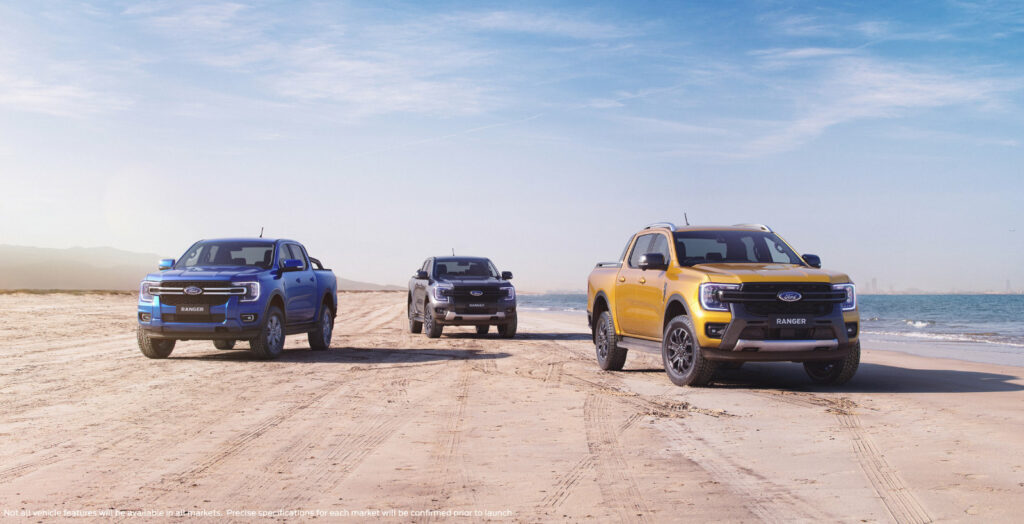The 1983 Corolla liftback—the E80 series was peak Corolla, relative to what was on offer in the C segment. Toyota was on a high then. Tesla finished itself this year, by firing its new-product development team at a time when it desperately needs new products—proper products, too, not the Cyberstuck which has so many […]
Tag: Toyota
Autocade traffic back on track, with 33 million page views
Yesterday must have been a record day at Autocade with 41,000 page views recorded in 24 hours. What I didn’t realize was that we have crossed the 33 million page view mark, since the counter was reset in March 2022 and I forgot what I needed to add to get the total. The last […]
Read More… from Autocade traffic back on track, with 33 million page views
This weekend’s milestones at Lucire and Autocade
Autocade’s 4,800th model: the Toyota Urban Cruiser Hyryder. Stuff that has happened: Lucire has turned 26. Not a huge celebration given we did the quarter-century last year. Looking back, we did it quite well. When we had our 20th and 21st, we intended to mark them through those years, but never really did. It […]
Read More… from This weekend’s milestones at Lucire and Autocade
Ford means nothing at all

I followed a Ford Ranger today and felt nothing. This isn’t as strange as it sounds. Ford has become a truck company here, too, and there’s nothing about the blue oval that stirs the soul any more. Mustangs are rare, and Ford—which once democratized flash—doesn’t have the brand equity that it used to. Never mind […]
Autocade slowly gets to 29 million page views
It took a while, but Autocade has now finally reached 29 million page views. The stats’ page since the count was reset shows 1,362,506 views. Add that to the 27,647,011 recorded on March 19, 2022, and we have well and truly crossed the 29 million mark (by 9,517, in fact). We probably got there yesterday […]
Read More… from Autocade slowly gets to 29 million page views
Rising popularity on Autocade
Ever since we had to reset the counter for Autocade in March, because of a new server and a new version of Mediawiki, it’s been interesting to see which pages are most popular. The old ranking took into account everything from March 2008 to March 2022. With everything set to zero again, I can now […]
We’ve reached 4,600 models on Autocade
We’ve hit 4,600 models on Autocade, with the Toyota Will VS taking us to this point, but the stats show we are sitting on 1,180,548 views. We have to get to 1,352,989 on the new count before I can announce we’ve reached 29 million page views. We’re looking at the lowest traffic on Autocade […]
Most of our top 10 sellers reflect our ignorance
The Suzuki Swift: one of the saving graces on New Zealand’s top 10 list. At the Opel relaunch briefing yesterday, I was shocked to find that these were New Zealand’s top selling vehicles for 2021. I knew about the first two, but had always assumed a Toyota Corolla would follow, plus some regular cars. […]
Read More… from Most of our top 10 sellers reflect our ignorance
Slightly slower growth at Autocade as it reaches 27,000,000 page views
Autocade did get to 27,000,000 page views some time last week, earning its latest million in two-and-a-half months. It was a slower pace of growth than what I had observed through the latter part of 2021, probably because I hadn’t done too many updates to the site during Q4 (unsurprisingly, having had to deal with […]
Read More… from Slightly slower growth at Autocade as it reaches 27,000,000 page views
John Shaft beats Luke Skywalker hands down
I always had decent pencil cases at kindergarten in Hong Kong and then when I started school in New Zealand. Usually they were car-themed but the pièce de résistance was this one, far nicer than what my classmates in my new home country had. While other kids were into Star Wars and things I […]